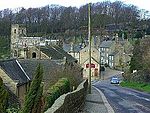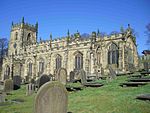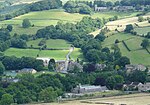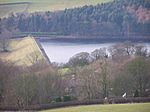Bradfield, South Yorkshire

Bradfield is a civil parish in the City of Sheffield, in South Yorkshire, England. The civil parish is extensive, the western half is situated in the moorlands of the Peak District, the eastern half is in lower agricultural land and contains the parish's significant habitations, which include the Sheffield suburb of Stannington, as well as Oughtibridge and Worrall, and the villages of High Bradfield and Low Bradfield. The parish also includes several reservoirs, and a number of minor settlements, such as Ewden. Bradfield is located 8 miles (13 km) from Sheffield city centre and 14 miles (23 km) from Barnsley. On 6 July 2014, Stage 2 of the 2014 Tour de France from York to Sheffield, passed through the village. It was also the location of the seventh climb of the stage, the Category 4 Côte de Bradfield. It was 1 kilometre (0.62 mi) long at an average gradient of 7.4%. The one point in the King of the Mountains competition was claimed by Andriy Hrivko of Astana Pro Team.
Excerpt from the Wikipedia article Bradfield, South Yorkshire (License: CC BY-SA 3.0, Authors, Images).Bradfield, South Yorkshire
Brown House Lane, Sheffield Bradfield
Geographical coordinates (GPS) Address Nearby Places Show on map
Geographical coordinates (GPS)
| Latitude | Longitude |
|---|---|
| N 53.429 ° | E -1.598 ° |
Address
Brown House Lane
Brown House Lane
S6 6LH Sheffield, Bradfield
England, United Kingdom
Open on Google Maps









